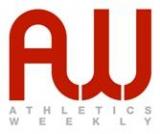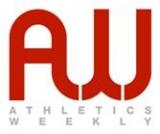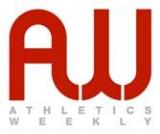Folders |
Hydration The right applicationPublished by
Too little or too much fluid intake can have a huge impact on performance, writes sports dietitian Alex CookWater makes up more than half of our bodyweight and we simply cannot survive without it. It is used for many essential processes, such as controlling temperature, removing waste products and transporting nutrients and oxygen around the body. Regular ingestion of fluids is not only vital for normal functioning of the body, but it is also vital for optimal sports performance. Performance and dehydrationDuring prolonged exercise, athletes are at high risk of dehydration. Exercise produces heat and as a result they lose large amounts of water and electrolytes through sweat to cool down. When an individual is dehydrated by as little as two per cent of bodyweight, performance is impaired by factors such as increased heart rate, increased perceived exertion, stomach upset and loss of coordination. The more dehydrated you become, the more pronounced the effects. In contrast, having too much fluid can be equally as damaging, not only in affecting performance through minor irritations such as stomach discomfort, but in extreme cases can prove fatal. Hyponatraemia causes a dilution of sodium in the blood as a result of drinking too much fluid. Some athletes may believe that more is better due to the focus we place on remaining hydrated during exercise, but this can have damaging effects. Slower runners that are out for longer tend to be at higher risk for developing this, compared to the faster runners. So how can we ensure achieving this fine line between too much fluid or too little? GuidelinesIn order to avoid dehydration, an athlete needs to drink sufficient fluid to match their sweat loss. It is impossible to recommend a generic fluid replacement plan as the amount of sweat lost is highly individual, being governed by various factors such as environment, length and intensity of exercise, metabolic rate and even genetics. As such, the amount of water needed to remain in fluid balance is different for every athlete and situation. Kenyan endurance runners are renowned for taking on little fluid when training. A study by Fudge et al (2008) found that although Kenyan athletes took on little fluid even during demanding training sessions, they remained well hydrated. The American College of Sports Medicine (2007) recommends that hydration needs vary between individuals and under different environments. Their main message is that the goal of drinking during exercise is to prevent excessive (>2% body weight loss from water deficit) dehydration and excessive changes in electrolyte balance to avert compromised performance. By estimating sweat rate during exercise, an athlete can gauge the amount of fluid lost and therefore have the ability to be guided on how to match losses during exercise. Sweat rate can vary from day to day and if you are serious about determining your fluid requirements, you can estimate your sweat rate under different conditions and exercise intensities. Methods include tracking pre and post-body mass or simply checking urine colour. Water or sports drinks?Studies have shown that drinks that are flavoured contain carbohydrate (6-8%) and sodium enhances intake and fluid absorption. This makes sports drinks ideal. Water is still fine, but it won t stimulate fluid intake in the same way and, therefore, a more planned approach to drinking may benefit to ensure consumption matches requirements. A study by Shirreffs et al (2007) found milk to be an effective rehydration drink post-exercise and has added benefit of providing essential carbohydrate and protein needed for recovery. The key message is to be aware, but not obsessed. Think about your own hydration strategy to practise in training and don t copy the runner in front of you. Everyone is different! Top tipsStart the race hydrated, having little and often during the morning (300-600ml) Try to match fluid intake with weight loss (just below and definitely not over) During the marathon, drink early and taking little and often” is better than large doses Do not over drink, weight gain during a marathon shows an increased risk for hyponatremia Sports drinks or water are the best options If it is hotter than you are used to on race day, be prepared to slow your pace, as drinking more fluid won t necessarily cool you down After the race you need to drink 150% of fluid lost (if 1kg weight is lost, you need to drink 1.5 litres) over the next one to two hours and then little and often through the remainder of the day How to calculate sweat rate Record your pre-training weight (kg) Record your post-training weight (kg) Run for 30-60min without drinking fluid Subtract post-run weight from pre-training weight and multiply by 1000 (convert to grams) The amount you lost in grams is equal to that lost in fluid If you did a 30-minute session, multiply that by two to get your ml per hour figure. This is the amount you should aim to drink in subsequent runs, remembering this will change with such things as running intensity and heat Alexandra Cook BSc P.g. Dip RD is a sports dietitian and a club runner with Thames Hare and Hounds. DIET 360 is a private dietetic and nutrition consultancy covering Lincolnshire, Rutland and Leicestershire (diet360.co.uk) The post Hydration – The right application appeared first on Athletics Weekly. Read the full article at: www.athleticsweekly.com
More news |






